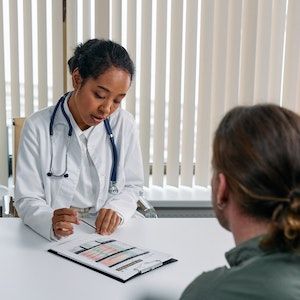Article
Colesevelam Enhances Odds of Clinical Remission for Bile Acid Diarrhea
Author(s):
There were no serious adverse events in the group of patients treated with colesevelam.

New research supports the use of colesevelam for the treatment of patients with bile acid diarrhea.1
A team, led by Christian Borup, MD, Department of Internal Medicine, Zealand University Hospital, determined the efficacy and safety of colesevelam in patients with bile acid diarrhea.
Bile Acid Diarrhea
Despite being a common cause, bile acid diarrhea is often overlooked as a cause of chronic watery diarrhea. Plasma 7α-hydroxy-4-cholesten-3-one (C4) can be an alternative to the gold standard tauroselcholic [75Se] acid (SeHCAT) test. However, there is low-certainly evidence that supports sequestrant treatment, including colesevelam.
In the randomized, double-blind, placebo-controlled, investigator-initiated phase 4 trial, the investigators enrolled 168 consecutive patients without inflammatory bowel disease (IBD) attending SeHCAT testing for suspected bile acid diarrhea at 4 secondary care centers in the Netherlands between Oct. 25, 2018 and July 1, 2021.
Each participant received either 12 days of treatment with colesevelam 625 mg (n = 84) or placebo (n = 84). The starting dose was 2 capsules twice daily, titrated to effect during the first 5 days of treatment.
The investigators also blinded C4 and SeHCAT diagnostic results during treatment. All patients with diarrhea with a daily mean of 3 or more bowel movements or 1 or more watery bowel movements were treated. The team also defined remission as the absence of both of those criteria during treatment days 6-12.
Outcomes
The investigators sought primary outcomes of the intention-to-treat remission rate in bile acid diarrhea diagnosed by C4 concentration greater than 46 ng/mL and secondary outcomes of the intention-to-treat remission rate in bile acid diarrhea diagnosed by SeHCAT retention of 10% or less.
The results show 41 patients had C4 concentrations greater than 46 ng/mL. Of this group, 22 were in the colesevelam group and 19 were treated with the placebo. For the primary outcome, 64% (n = 14) of the colesevelam group and 16% (n = 3) achieved remission (adjusted odds ratio [aOR]. 9.1; 95% confidence interval [CI], 1.9-62.8; P = 0.011).
After analyzing the secondary outcomes, the investigators found 75 patients had retention of less than 10%, 37 in the colesevelam cohort and 38 in the placebo group.
In the colesevelam cohort, 59% (n = 22) achieved remission, compared to 13% (n = 5) of the placebo group (aOR, 11.1; 95% CI, 3.4-45.6; P = 0.00020).
In the safety analysis, the investigators did not identify any serious adverse events and found the common adverse events were transient. However, 5 patients who achieved the primary outcome who were treated with colesevelam had abdominal pain, while 9 had bloating, and 4 had nausea.
For the placebo group, 4 had abdominal pain, 4 had bloating, and 1 had nausea. There were no withdraws because of adverse events.
“Colesevelam was superior to placebo at inducing remission of bile acid diarrhea diagnosed with C4 concentration greater than 46 ng/mL,” the authors wrote. “Secondary outcome data suggest similar efficacy treating SeHCAT-defined bile acid diarrhea. Colesevelam was safe during the treatment.”
References:
Borup, C., Vinter-Jensen, L., Jørgensen, S. P., Wildt, S., Graff, J., Gregersen, T., Zaremba, A., Borup Andersen, T., Nøjgaard, C., Timm, H. B., Rainteau, D., Hansen, S. H., Rumessen, J. J., & Munck, L. K. (2023). Efficacy and safety of Colesevelam for the treatment of bile acid diarrhoea: A double-blind, randomised, placebo-controlled, phase 4 clinical trial. The Lancet Gastroenterology & Hepatology. https://doi.org/10.1016/s2468-1253(22)00401-0





